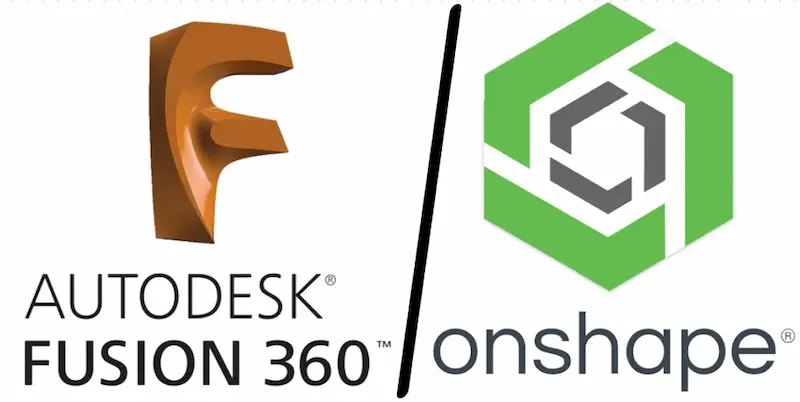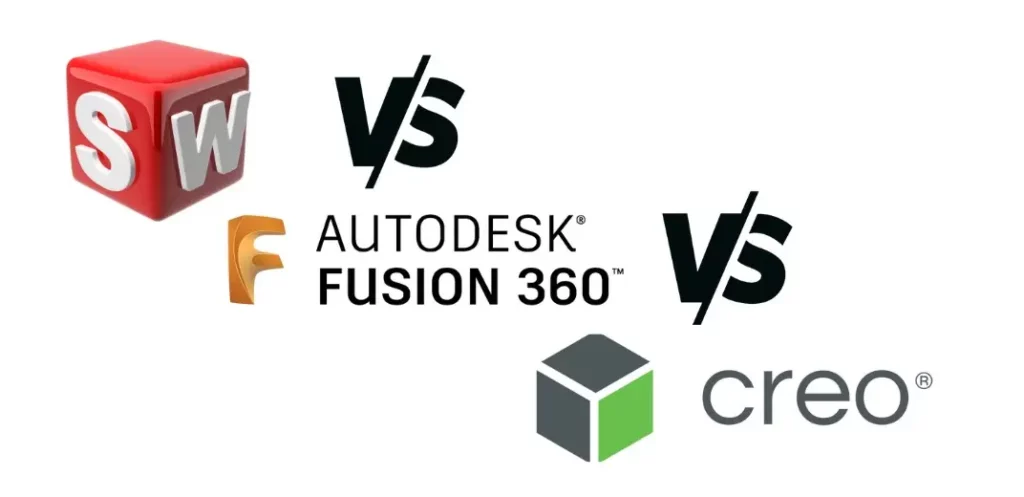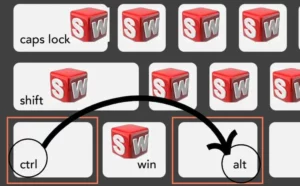Computer-aided design (CAD) software is a significant tool across various industries, which enables engineers and designers to create detailed 3D models of their products.
Among the numerous CAD software options available, SolidWorks is a popular choice with its extensive features and robust surface modeling capabilities.
Nevertheless, other CAD software options like Creo, Inventor, Fusion 360, and Onshape also possess their distinct strengths and weaknesses. This article will delve into a comparative analysis of SolidWorks and these other CAD software options.
A Brief Overview of SolidWorks
Renowned SolidWorks boasts a feature-rich and advanced surface modeling capability. The user-friendly interface has played a significant role in making it a preferred choice for many engineers and designers.
However, the software landscape is diverse, and choosing the right CAD software depends on many factors, including industry requirements, customer preferences, and individual needs.
SolidWorks Pros:
- Extensive Features: SolidWorks offers a wide array of features, making it a good choice for complex design tasks.
- Advanced Surface Modeling: The software excels in surface modeling, allowing for the creation of detailed designs.
- User-Friendly Interface: SolidWorks’ intuitive interface has contributed to its widespread adoption.
- User Community: The SolidWorks community is considered to be the biggest among CAD software, These can help a lot in troubleshooting and exchanging information.
SolidWorks Cons:
- Cost: SolidWorks can be a very expensive investment, especially for small businesses or individual users.
- Doesn’t play nice with others: Other software CAD files can be difficult to exchange with SolidWorks.
Other CAD Software Options
Creo:
Developed by PTC in 2011, considered relatively new, known as Pro/ENGINEER, it is popular in the industry, offering a range of capabilities for product design and development.

Pros:
- Parametric Modeling: Creo excels in parametric modeling, allowing for efficient design changes.
- It gives the user more control of the design than the other CAD software.
- Large Assembly: It handles large assemblies with ease, making it suitable for complex projects, You’ll be able to work with a much bigger assembly without performance issues
Cons:
- Cost: Similar to SolidWorks, Creo can be expensive.
- Interface Complexity: Some users find the interface less intuitive compared to SolidWorks. and it may be more frustrating on the learning path.
Fusion 360 and Onshape:

Both Fusion 360 and Onshape are web-based CAD solutions, offering collaborative design capabilities. But they are mainly considered for hobbyists and makers that design small projects.
Pros:
- Web-Based Collaboration: Ideal for remote teams, as designs can be accessed and edited online.
- Cloud-Based Storage: Both platforms provide cloud-based storage, ensuring data accessibility from anywhere.
- Easy to jump into.
- It’s available for free and almost free, and even when paid, it’s still very affordable.
Cons:
- Internet Dependency: The need for a constant internet connection may be a downside for some users.
- Drawings: are still kind of bad and super slow, even for simple parts.
- Lack of features: Fusion360 is still behind in terms of designing complex assemblies due to the lack of advanced features.
- Limited Features: Compared to SolidWorks and other traditional CAD software, web-based solutions may have some limitations:
- Limited CAM functionality.
- Single-user data management.
- Limited electronics and PCB designs.
- Limited 2D documentation and drawings.
- Forum support only.
- Limited import/export file types.
Choosing the Right Software
Industry Focus:
Consider the industries you intend to target. Different sectors may have preferences for specific CAD software. For example, aerospace industries might lean towards CATIA, while automotive industries often favor NX.
Make sure to do some research about the company/industry you want to work for before starting to invest time and energy into learning CAD software.
Customer Preferences:
If your customers have standardized on a particular CAD format (e.g., NX), compatibility becomes crucial. Converting models between formats can be inconvenient and may lead to data loss.
Popular Choices:
In industries where SolidWorks, Creo, or other software are prevalent, choosing the most popular option may facilitate collaboration with other designers and data exchange.
Web-Based vs. Traditional CAD:
Consider whether a web-based solution aligns with your workflow and connectivity requirements. Web-based solutions offer flexible options but may lack certain advanced features found in traditional CAD software.
Conclusion
Selecting the right CAD software is a crucial decision that can depend on multiple factors. SolidWorks remains a robust choice, but alternatives like Creo, Inventor, Fusion 360, and Onshape cater to diverse needs.
Understanding the specific requirements of your industry, considering customer preferences, and focusing on the features of each software will guide you toward the most suitable CAD solution for your design requirements.
Also Read:
SolidWorks best practices and tips for professional design.








